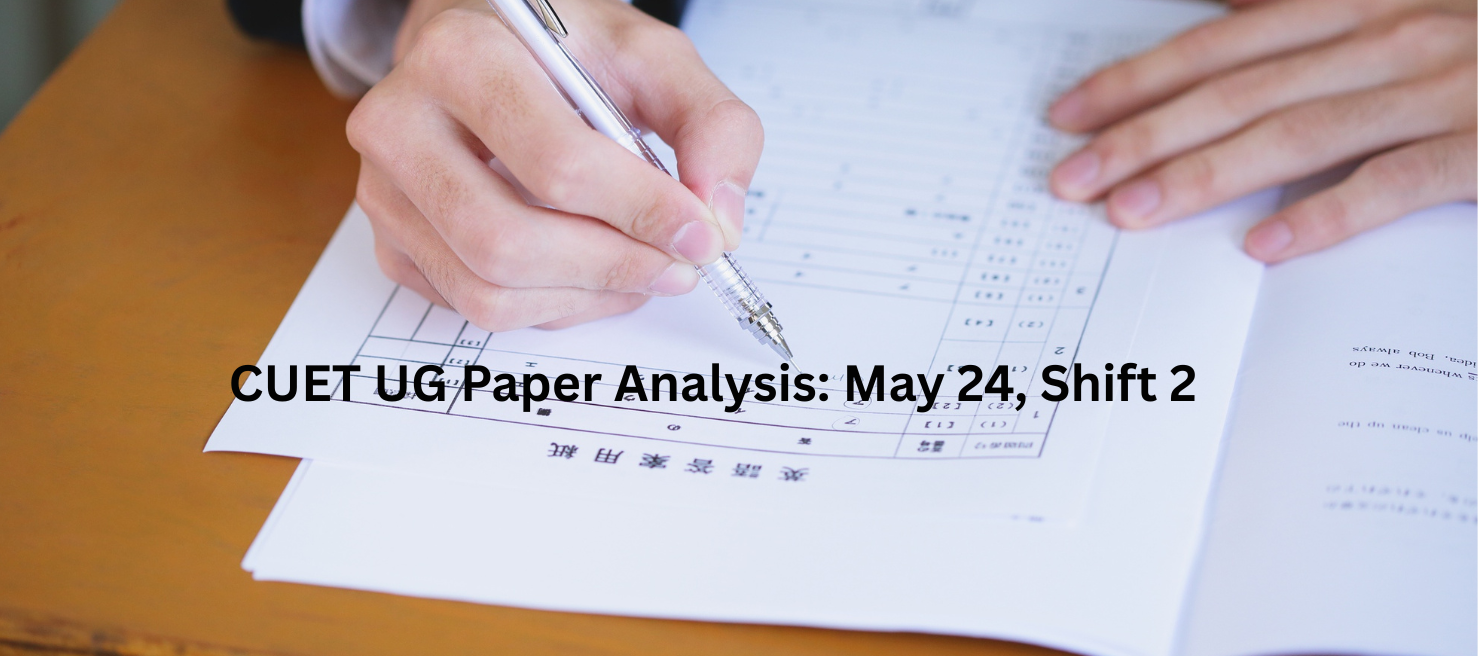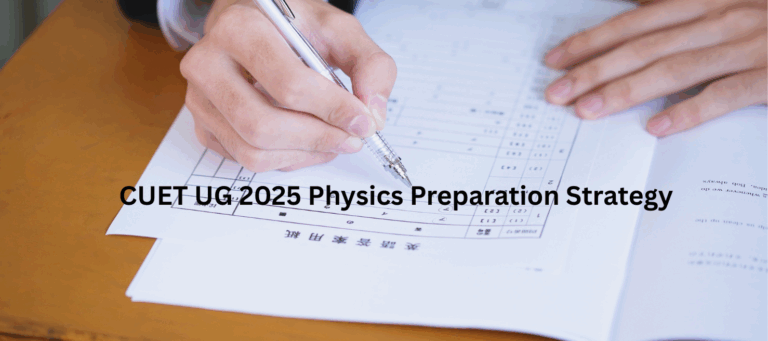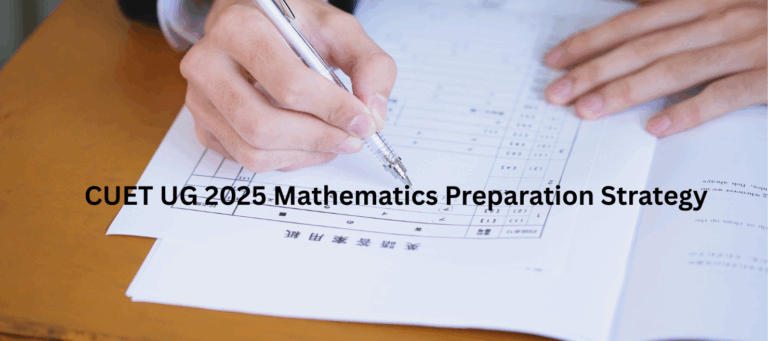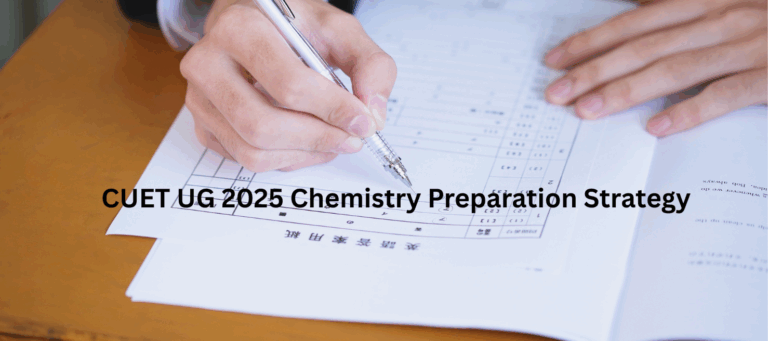
The CUET UG 2025 May 24th Shift 2 exam evaluated students across six important subjects: English, General Aptitude Test (GAT), Chemistry, Economics, Business Studies, and Accountancy. This shift brought a diverse mix of question types and difficulty levels, reflecting a well-rounded assessment designed to test both conceptual understanding and application skills. While subjects like English and Business Studies leaned towards an easy to moderate level, the General Aptitude Test posed significant challenges with calculation-intensive and reasoning questions. Chemistry, Economics, and Accountancy maintained a moderate difficulty, requiring students to be well-prepared in both theory and numerical problem-solving.
The CollegeDost comprehensive analysis explores each subject’s pattern, question types, and difficulty, providing valuable insights into the overall exam experience and helping future aspirants understand what to expect and how to strategise their preparation.
- May 13th CUET UG Paper Analysis Shift 1
- May 13th CUET UG Paper Analysis Shift 2
- May 14th CUET UG Paper Analysis Shift 1
- May 14th CUET UG Paper Analysis Shift 2
- May 15th CUET UG Paper Analysis Shift 1
- May 15th CUET UG Paper Analysis Shift 2
- May 16th CUET UG Paper Analysis Shift 1
- May 16th CUET UG Paper Analysis Shift 2
- May 19th CUET UG Paper Analysis Shift 1
- May 19th CUET UG Paper Analysis Shift 2
- May 20th CUET UG Paper Analysis Shift 1
- May 20th CUET UG Paper Analysis Shift 2
- May 21st CUET UG Paper Analysis Shift 1
- May 21st CUET UG Paper Analysis Shift 2
- May 22nd CUET UG Paper Analysis Shift 1
- May 22nd CUET UG Paper Analysis Shift 2
- May 23rd CUET UG Paper Analysis Shift 1
- May 24th CUET UG Paper Analysis Shift 1
- May 26th CUET UG Paper Analysis Shift 1
- May 26th CUET UG Paper Analysis Shift 2
- May 27th CUET UG Paper Analysis Shift 1
- May 27th CUET UG Paper Analysis Shift 2
- May 28th CUET UG Paper Analysis Shift 1
- May 28th CUET UG Paper Analysis Shift 2
- May 29th CUET UG Paper Analysis Shift 1
- May 29th CUET UG Paper Analysis Shift 2
- May 30th CUET UG Paper Analysis Shift 1
- May 30th CUET UG Paper Analysis Shift 2
- May 31st CUET UG Paper Analysis Shift 1
- June 2nd CUET UG Paper Analysis Shift 1
- June 2nd CUET UG Paper Analysis Shift 2
- June 3rd CUET UG Paper Analysis Shift 1
- June 3rd CUET UG Paper Analysis Shift 2
CUET UG 2025 Exam Overview
Below is the exam overview of CUET UG 2025.
| Exam Particulars | Exam Details |
| Total Subjects Offered | 37 (13 Languages + 23 Domain Subjects + 1 General Aptitude Test) |
| Medium | 13 Indian languages (Assamese, Bengali, English, Gujarati, Hindi, Kannada, Malayalam, Marathi, Punjabi, Odia, Tamil, Telugu, and Urdu) |
| Subjects to Choose | Up to 5 subjects |
| Total Marks of CUET Exam | 250 |
| Questions per Subject | 50 Compulsory Questions |
| Marking Scheme | +5 for correct answer, -1 for incorrect answer, and no marks for unattempted questions |
| Exam Mode | CBT Mode |
| Duration | 60 minutes per subject |
Where To Check CUET UG 2025 Paper Analysis
If you’re looking for the most reliable and detailed CUET UG 2025 exam analysis, CollegeDost is your go-to platform!
We provide up-to-date insights, question paper breakdowns, difficulty level reviews, and expert opinions to help you understand how the exam went and prepare for the future papers. Our experts give analysis based on memory based questions, making CollegeDost the perfect place to get accurate and comprehensive exam analysis right when you need it. Check out CollegeDost page for all the latest CUET UG 2025 updates and tips!
👉 Check CUET UG 2025 Exam Analysis on CollegeDost
CUET UG 2025 Exam: Shift Timings Today
Check the CUET UG 2025 exam shift timings in the table below.
| CUET UG 2025 Slot Time for 24th May | Reporting Time | Gate Closing Time | Shift Timing |
| CUET UG 2025 Shift 1 | 7 AM | 8.30 AM | 9 AM to 12 PM |
| CUET UG 2025 Shift 2 | 1 PM | 2.30 PM | 3 PM to 6 PM |
CUET Exam Pattern 2025
The CUET UG 2025 exam is structured to assess various skills across multiple subjects. Below is a detailed breakdown of the exam pattern:
| Sections | Subjects / Tests | No. of Questions | Question Type |
| Section IA | 13 different languages (any one can be chosen) | 50 | Reading Comprehension based on different types of passages – Factual, Literary, and Narrative; includes Literary Aptitude and Vocabulary |
| Section II | 23 domain-specific subjects (choose as per eligibility) | 50 | MCQs based on the NCERT Class XII syllabus |
| Section III | General Test (for programs where it’s used for admission) | 50 | General Knowledge, Current Affairs, General Mental Ability, Numerical Ability, Quantitative Reasoning (up to Grade 8 level), Logical and Analytical Reasoning |
CUET UG 2025 Exam Analysis: Based on the Number of Attempts
Candidates can check the number of good attempts that they can expect in the exam from the following table.
| CUET UG Subjects | Difficulty Level | Good Attempts |
| English | Easy to Moderate | 45 |
| General Aptitude Test | Difficult | 25-30 |
| Chemistry | Moderate | 35-40 |
| Economics | Moderate | 30-35 |
| Business Studies | Easy to Moderate | 35-40 |
| Accountancy | Moderate | 30-35 |
CUET UG 2025 Exam Analysis: May 24 2025, Shift 2
The CUET exam date 2025 of May 24th, shift 2, for the English, General Aptitude Test, Chemistry, Economics, Business Studies, and Accountancy paper. As per the students’ initial reaction, the exam for the Shift 2 is considered Moderate. Check out the subject-specific analysis and weightage of each chapter.
CUET UG 2025 GAT Paper Analysis
Students found the GAT paper increasingly challenging, mainly due to the high weightage of calculation-heavy Quantitative Aptitude questions, especially on topics like Linear Programming. Moreover, students found the reasoning questions were moderate in difficulty and focused on relation-based problems, appearing more in morning shifts. However, the Current Affairs had very few questions and were mostly static or logic-based. Many students struggled with time management, but those well-prepared felt the paper was still attainable despite its moderate to difficult level.
| Section | Details / Notes | Weightage / Difficulty |
| Current Affairs | Very few questions (7); mostly static and logic-based GK | Low weightage |
| Quantitative Aptitude | High weightage; calculation-intensive, focus on LPP (Linear Programming Problems) | High difficulty; major part of the GAT paper |
| Reasoning | Moderate weightage; relation-based problems are common, more in the morning shifts | Moderate difficulty |
| Overall GAT Paper | Moderate weightage; relation-based problems are common, more in morning shifts | Moderate to difficult, attemptable if well-prepared |
General Awareness-Chapterwise Weightage
The table below highlights the importance and distribution of different subjects within the General Awareness subject.
| Category | Expected Questions |
| Geography | 7 |
| Science | 4 |
| Personalities | 4 |
| Polity | 3 |
| Defence | 2 |
| Awards | 2 |
| Sports | 1 |
| Currency | 1 |
| Miscellaneous | 1 |
Logical reasoning-Chapterwise Weightage
| Topic | Expected Questions |
| Visual Reasoning | 4 |
| Series | 2 |
| Coding-Decoding | 2 |
| Arrangement | 2 |
| Clocks | 2 |
| Analogy | 1 |
| Family Tree | 1 |
| Calendar | 1 |
| Data Sufficiency | 1 |
| Directions | 1 |
| Statement-Conclusion | 1 |
Numerical Ability-Chapterwise Weightage
| Topic | Expected Questions |
| Time and Work | 2 |
| Ratio | 2 |
| Simplification | 1 |
| Fractions | 1 |
| HCF-LCM | 1 |
| Problems on Age | 1 |
| Percentage | 1 |
| Profit, Loss & Discount | 1 |
| Simple Interest | 1 |
| Area | 1 |
| Volume | 1 |
| Speed, Time, Distance | 1 |
| Mean & Mode | 1 |
| Triangle | 1 |
| Trigonometry | 1 |
CUET UG 2025 English Paper Analysis
Students found the English paper to be mostly moderate and manageable. Vocabulary questions, especially antonyms like “insolvent” and commonly asked words such as “peevish,” “belligerent,” and “unkempt,” carried high weightage. Moreover, sentence rearrangement and phrasal verbs appeared frequently but were not too difficult. However, the reading comprehension section included three passages, with one being slightly challenging due to its indirect questions. Students also found that Grammar had fewer questions, focusing mainly on adverbs, prepositions, and tenses. Idioms, proverbs, poetic devices, homophones, and one-word substitutions were present and required moderate attention. Overall, students who focused on vocabulary and familiar question types found the paper easy to attempt.
| Topic | Details / Examples | Weightage / Notes |
| Grammar | Mainly Adverbs, Prepositions (e.g., “Due to”), Tense, Conjunctions, Models | Low (around 5 questions) |
| Antonyms | High focus; example: Insolvent (with antonym Solvent) | High |
| Synonyms | Present but less than antonyms | Moderate |
| Vocabulary Words | Peevish, Belligerent, Unkempt, Bankrupt, Defy, Precarious, Vague, Clumsy, Stingy, Indolence, Voracious, Cloudy, Sloth, Profound | High |
| Sentence Rearrangement | 8–12 questions | Moderate to High |
| Idioms & Phrases | Bury the Hatchet, Tooth and Nail | Moderate |
| Phrasal Verbs | Cut (cut down, cut out), Put (put off, put on), Iron, Look (look out, look through), Call Off, Pay Off, Bring Up, Take Down | Frequent |
| Poetic Devices | Simile, Metaphor, Personification, Hyperbole, Alliteration, Polyndeton, Oxymoron (e.g., Defining Silence) | Moderate |
| Homophones & Homonyms | Principal vs Principle, Bail vs Bale, Wave vs Waive, Stationary vs Stationery, Censor vs Censure, new vs knew | Important |
| Reading Comprehension (RC) | 3 passages: 2 easy, 1 tough (indirect questions); Topics include grandfather’s routine, story, aim/purpose/goal | Moderate |
| One-Word Substitution | Vocabulary-based | Moderate |
| Figures of Speech | Matching questions (Oxymoron, Metaphor, Homophone, Alliteration) | Low to Moderate |
CUET English Chapterwise Weightage
The table below highlights the importance and distribution of different subjects within the English subject.
| Topics | Number of Questions |
| Comprehension | 15 |
| Parts of speech | 3–4 |
| Para jumbles | 3–4 |
| Synonyms and antonyms | 2–3 |
| Active/passive voice | 3–4 |
| Fill in the blanks | 3–4 |
| Incorrect/correct statement | 3–4 |
| Phrases and meaning | 5–6 |
CUET UG 2025 Chemistry Paper Analysis
Students found the Chemistry paper to be moderately challenging but mostly as expected with Organic Chemistry being the highest weightage with questions on IUPAC naming, reactions, and conversions. However, Physical and Inorganic Chemistry were well represented with questions on solutions, kinetics, electrochemistry, and D & F block elements. Many students found numerical questions easy to moderate, requiring conceptual understanding. Topics like amino acid codes and vitamin deficiency diseases caused some difficulty.
| Section | Details / Topics Covered | Number of Questions / Notes |
| Overall Difficulty | Moderate | Several basic numericals |
| Weightage Distribution | Organic Chemistry (high weightage), Physical, Inorganic | Organic: 25–27, Inorganic: 10–11, Physical: 12–13 |
| Paragraph-Based Qs | Coordination Chemistry (confirmed), possibly Kinetics | 2 passages |
| Solutions | Formula matching (Molarity, Molality, etc.), Colligative Properties, Solubility vs Temperature, Henry’s Law | ~6 questions; very easy |
| Chemical Kinetics | First order reactions, reaction rates, related concepts | First order reactions, reaction rates, and related concepts |
| Electrochemistry | Nernst equation, log KC calculation, Kohlrausch’s Law | 2 questions; easy |
| D & F Block Elements | Oxidation numbers, redox reactions, magnetic moment | 4–5 questions |
| Organic Chemistry | IUPAC naming, oxidation reactions, Fittig, Diazotisation, SN1/SN2, Kolbe reaction, nucleophilic addition/reactivity, acidic/basic strength, Wolf-Kishner Reduction | 25–27 questions total (part of organic) |
| Biomolecules | Milk sugar (Lactose), enzymes, amino acid one-letter codes, DNA fingerprinting | Few questions; amino acid codes tricky |
| Other Topics | EDTA, vitamin deficiency diseases (e.g. Beri-beri), tests differentiating aniline/amine | 2–3 questions |
| Numerical Difficulty | Mostly easy to moderate with conceptual reasoning | — |
CUET Chemistry-Chapterwise Weightage
The table below highlights the importance and distribution of different subjects within the Chemistry subject.
| Topics | Number of Questions |
| Solid State | 4 |
| Electrochemistry & Solutions | 5 (Case study – Slightly difficult) |
| Chemical Kinetics | 2–3 |
| P Block Elements | 2–3 |
| D and F Block Elements | 5 (Case study – Easy) |
| Coordination Compounds | 5–6 (Moderately difficult) |
| Alcohols, Phenols, and Ethers | 4–5 |
| Aldehydes, Ketones, and Carboxylic Acids | 3–4 |
| Organic Compounds Containing Nitrogen | 4 |
| Polymers | 1–2 |
| Chemistry in Everyday Life | 1–2 |
CUET UG 2025 Economics, Business Studies, Accountancy Paper Analysis
Students found Economics and Accountancy to be moderately challenging, with a balanced mix of theory and numerical questions requiring good conceptual understanding. Economics included assertion-reason and case-based questions on key topics like National Income and Money Banking. Moreover, Business Studies was seen as easier to moderate, featuring mostly direct NCERT questions and manageable case studies. Though some application questions were tricky, students felt the paper was time-manageable and scored overall.
| Subject | Difficulty Level | Key Details / Topics Covered |
| Economics | Moderate | Mix of micro and macroeconomics; assertion-reason and case-based questions; numerical and graphical formula-based; topics: National Income, Government Budget, Money and Banking |
| Business Studies | Easy to Moderate | Many direct NCERT and manageable case-based questions; topics: Principles of Management, Marketing, Staffing, Financial Management; some tricky application questions but time-manageable and scoring |
| Accountancy | Moderate | Partnership Accounts, Company Accounts, Financial Statement Analysis; mix of numerical and theory; analytical thinking needed; tricky MCQs due to similar options; aligned with NCERT |
CUET Economics Chapterwise Weightage
The table below highlights the importance and distribution of different subjects within the Economics subject.
| Chapter/Topic | Number of Questions |
| Consumer Behavior and Demand | 6–7 |
| Introductory Microeconomics | 2 |
| Balance of Payments | 4–5 |
| Government Budget and the Economy | 3–4 |
| Determination of Income and Employment | 3–4 |
| National Income | 3–4 |
| Money and Banking | 2–3 |
| Rural Development | 4–5 |
| Indian Economy (1950–1990) | 2–3 |
| Infrastructure | 2–3 |
| Development Experiences of India (Comparison with Neighbors) | 2–3 |
| Indian Economy on the Eve of Independence | 1–2 |
| Economic Reforms since 1991 | 1–2 |
CUET Business Studies Chapterwise Weightage
The table below highlights the importance and distribution of different subjects within the Business Studies subject.
| Topics | Number of Questions |
| Nature and Significance of Management | 5-6 |
| Principles of Management | 2-3 |
| Business Environment | 3-4 |
| Planning | 2 |
| Organizing | 5 |
| Staffing | 6 |
| Directing | 4-5 |
| Controlling | 4-5 |
| Marketing | 5-6 (including case studies) |
| Consumer Protection | 2 |
| Entrepreneurship Development | 2 |
CUET Accountancy Chapterwise Weightage
The table below highlights the importance and distribution of different subjects within the Accountancy subject.
| Topics | Number of Questions |
| Reconstitution of Partnership | 10–12 |
| Analysis of Financial Statements | 7–8 |
| Accounting for Share and Debenture Capital | 6–7 |
| Accounting – Not for Profit | 5–6 |
| Computerized Accounting System | 4–5 |
Student Reviews For CUET UG 2025 May 24th Shift 2 Exam
Most students from different states found CUET UG 2025 Shift 2, which was held on May 24th, was Moderate. Here is a summary of what students perceived about the exam.
Chemistry: Students found it moderately difficult but mostly as expected. Organic Chemistry had high weightage with many reaction and nomenclature questions. Physical and Inorganic topics were well-covered with easy to moderate numericals. Some topics like amino acid codes and vitamin deficiency caused minor challenges.
GAT (General Aptitude Test): Quantitative Aptitude was the toughest section with heavy calculation-based questions, especially on Linear Programming. Reasoning was moderate with relation-based problems, and Current Affairs questions were few. Time management was a concern for some.
English: The paper was moderate and vocabulary-focused, with high emphasis on antonyms, synonyms, idioms, phrasal verbs, and sentence rearrangement. Reading comprehension included three passages with indirect questions. Grammar questions were fewer but needed attention.
Economics: Moderate difficulty with a mix of micro and macro questions, assertion-reason formats, and numerical/graphical interpretation on topics like National Income and Money Banking.
Business Studies: Easy to moderate, mostly direct NCERT questions and manageable case-based ones. Topics included Principles of Management and Marketing. Application questions were tricky but scoring.
Accountancy: Moderate level with a balance of theory and numerical questions on Partnership and Company Accounts. Some MCQs were tricky due to similar options but aligned with NCERT syllabus.
CUET UG 2025 Exam Day Guidelines
Given below are a few CUET UG 2025 exam day guidelines that students need to follow.
- Carry Only Required Items: Only take your printed admit card (with passport-size photograph), your valid photo ID (Aadhaar or PAN card), a transparent ballpoint pen, and a transparent water bottle. Candidates can check all the CUET exam details on the admit card and are advised to adhere to the instructions.
- Be On Time: Report to the exam center well in advance relative to your reporting time (7:00 AM for Shift 1 and 1:00 PM for Shift 2). If you are late, you will not be allowed to enter.
- Prohibited Items: Do not bring mobile phones, smart watches, electronic devices, bags, books, or food if not medically required (with documentation).
- Maintain Discipline: Be seated in your assigned seat, only do rough work on the sheets provided, and do not perform any unfair practice or make any noise in the exam hall.
- Time Management: It is a critical challenge across subjects, especially with lengthy sections like RC or Quant. It’s advised to tackle easy questions first.
- The Normalisation Factor: This factor will account for variations in difficulty across shifts. The focus should be on attempting as many questions with 100% accuracy.
CUET Dress Code For Females
| Category | Allowed | Not Allowed |
| Clothing | Half-sleeved, simple kurtis/tops | Full-sleeved, heavily embroidered, or layered clothing |
| Bottom Wear | Simple leggings, trousers, salwar | Skirts, jeans with extra pockets |
| Footwear | Slippers, flat sandals | Heels, closed-toe shoes, boots |
| Accessories | None | Jewelry (earrings, rings, bangles, bracelets, belts) |
| Electronic Items | None | Smartwatches, Bluetooth devices, and wired accessories |
CUET Dress Code 2025 for Males
| Category | Allowed | Not Allowed |
| Clothing | Half-sleeved, plain shirts or t-shirts | Full-sleeved shirts, layered clothing, and embroidery |
| Bottom Wear | Light trousers, simple jeans | Cargo pants, jeans with too many pockets |
| Footwear | Slippers, sandals | Shoes, sneakers, boots |
| Accessories | None | Watches, belts, caps, sunglasses, metallic items |
| Electronic Items | None | Smartwatches, Bluetooth devices, and wired accessories |
Things Allowed Inside the Examination Hall
- Transparent Water Bottle
- Admit Card (printed copy)
- Face Mask & Gloves (if applicable)
- Personal Hand Sanitiser (50 ml)
- Rough Sheets (provided by the exam centre)
- Passport-size Photograph (same as uploaded in the application)
- Simple Black/Blue Ballpoint Pen (if specified)
- Valid Photo ID Proof (Aadhar, PAN, Passport, etc.)
Things Not Allowed Inside the Examination Hall
- Books, Notes, or Any Study Material
- Mobile Phones & Smartwatches
- Wallets, Handbags, Sunglasses
- Bags, Pouches, or Any Items with Metal Components
- Electronic Gadgets (earphones, calculators, etc.)
- Jewellery, Caps, or Hats
- Food or Drinks (except water)
- Any Written or Printed Papers
What’s New In CUET UG 2025?
Check out some new changes introduced by UGC and which will be implemented from CUET UG 2025 onwards.
- Students can now take CUET UG exams in any subject, regardless of their Class 12th subjects.
- CUET UG will be conducted solely in CBT mode.
- CUET subjects have been reduced to 37 from 63. Teaching Aptitude, Entrepreneurship, and Legal Studies subjects has been removed.
- The duration of the test is 60 minutes for all the subjects.
- The GAT scores will decide the admission for the removed CUET subjects.
- There will be no optional questions.
Frequently Asked Questions
1. What are the vocabulary words emphasised in the English subject in CUET UG 2025, shift 2 of 24th May?
The vocabulary words emphasised in the English subject are Peevish, Belligerent, Unkempt, Bankrupt, Defy, Precarious, Vague, Clumsy, Stingy, Indolence, Voracious, Cloudy, Sloth, Profound
2. What was the overall difficulty level of the CUET UG 2025 exam on May 24th Shift 2?
The overall difficulty ranged from moderate to slightly challenging, with sections like Chemistry and Accountancy being more demanding, while English and General Aptitude were relatively easier.
3. Which section in the CUET UG May 24th Shift 2 exam was the toughest for students?
Many students found the Chemistry section to be the toughest due to tricky application-based questions and detailed concepts.
4. What is the CUET exam syllabus?
CUET exam syllabus has a language subject which has various types of passages, such as factual, literary, and narrative etc., 5 domain subjects, and a section of GAT which assesses General Knowledge, Current Affairs, General Mental Ability, Numerical Ability, etc.
5. Did the Business Studies and Accountancy sections align well with the expected syllabus of CUET UG 2025?
Yes, both Business Studies and Accountancy closely followed the standard syllabus, though some questions like rinciples of Management, Marketing, Staffing, Financial Management from Business Studies and Partnership Accounts, Company Accounts, Financial Statement Analysis from Accountancy required practical application of concepts.






